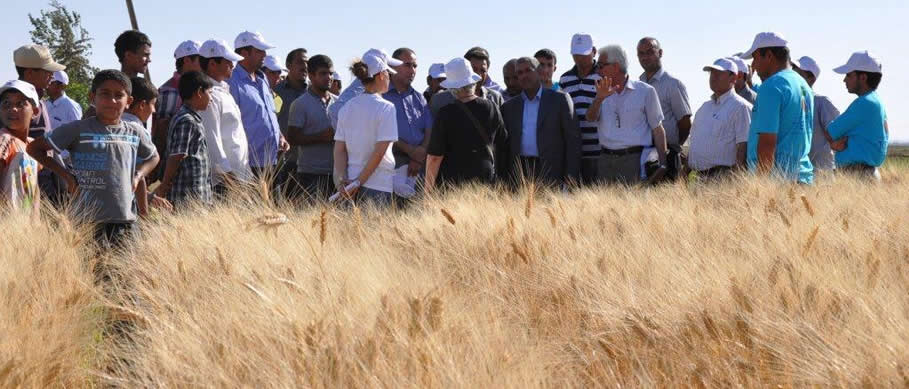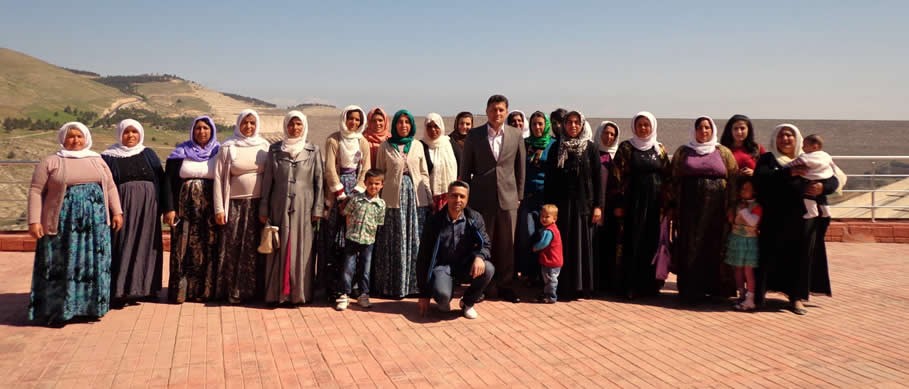
To understand the current status of agricultural extension in the GAP region, the overall situation and problems of the extension system in Turkey must be considered. From this perspective, the status of the agricultural extension system based on public (Ministry of Agriculture) extension in Turkey and with “Regulations for the Preparation of Agricultural Extension and Advisory Services” which was put into effect in 2006 by the Ministry, it is necessary to consider events in local areas of voluntary organizations even if they are limited.
Excluding the public extension, the system is configured fully for the benefit from the support provided from the relevant ministry aside the real problems, as it is not a sustainable nor a professional approach which can be solved by self-aid principle. The first and most important condition for the successful implementation by farmers’ organizations of this system is being aware of the structures of organizations that need to be strong, and agricultural issues in the region and the main reasons that created them. Therefore, in our country, despite of the fact that in recent years, in respect of agricultural training extension, partly private sector, farmers’ organizations and independent consultants were engaged, and it can be said that these services are provided wholly by the Ministry of Agriculture.
When we look at the problems related to agricultural production in the GAP region, especially in the areas opened and to-be-opened for irrigation, farmers that are not adequately supported with extension of training form the basis of all the problems and all parties concerned about this all the time. There are many reasons for this situation, but some of them are as follows: the Ministry of Agriculture became incapacitate in time to fulfil their essential tasks which was the extension of training because of various bureaucratic factors and regulation of supports, incapacity of educating sufficient personnel sufficient in both quality and quantity for institutions and organizations that provide training in extension services, and incapacity of providing the coordination and cooperation on these issues. All these problems are still valid and constitute the basis of GAP TEYAP project. GAP TEYAP project was implemented and improved in 2011 to be executed in cooperation with relevant institutions and organizations in coordination with GAP and on the purpose of developing a model for the region to bring lasting solutions to this problem as well as to improve the effectiveness of the extension of training services particularly in the areas opened or to-bebe-opened for irrigation.
Intense and important works were carried out within the scope of contribution of institutions and organizations for the development of training capacities in the extension under GAP TEYAP, providing development for capacities of farmers and farmers’ organizations, creating cooperation between relevant institutions and organizations, creating coordination and awareness, and to develop an appropriate extension model for the region.
In addition to all these studies that are carried out under GAP TEYAP and all works that were carried out by relevant institutions and organizations to this day, are very important for solving the region’s major agricultural problems, they have shown us some facts. According to the feasibility report of Training Extension of GAP Region which was prepared under the GAP TEYAP Project; there are 3,14m hectaresof agricultural land and there are 264,356 farmers in the region. There are 251 extension personnel directly related to extension services in our educational institutions and organizations, who are responsible for serving over 1,000 farmers in an area of 125,000 decares. Continuous increase in the irrigation area, the continuous increase in the number of farmers with conditions such as heritage and land sales, continuous development of agriculture, population growth, increase in food needs and the creation of a competitive environment in the globalized world with new trends diversify agricultural issues and increase the importance of extension of training. In such a case, unfortunately it will be impossible and inadequate to provide service to all kinds of needs that occur in the environment. Therefore, the path towards a permanent solution to this problem is to use the right instruments with the right applications and in order to ensure that such services provided by farmers ‘organizations, it is obligation for farmers’ organizations to develop and strength themselves in aspects of administrative, technical and financial. However, the implementation of a system based on farmers’ organizations in our region, of course, is a long and arduous task. Farmers habits that have continued for many years, social structure of the region, agriculture policies, the implementation of agricultural subsidies and regulations have a direct effect in this project. When taking into consideration the social and cultural structure of the region, profiles of farmers and existing structure of farmers’ organisations, it cannot easily be concluded that whether the functioning of such the system will work and providing support with a strategic approach in a certain time, by applying an intensive awareness campaign, it is believed that creating such a structure is possible.


